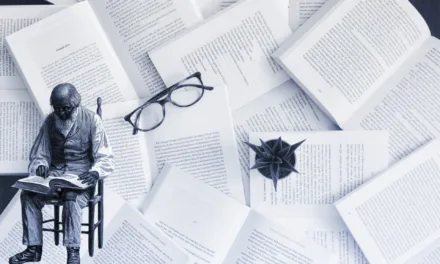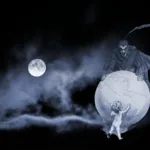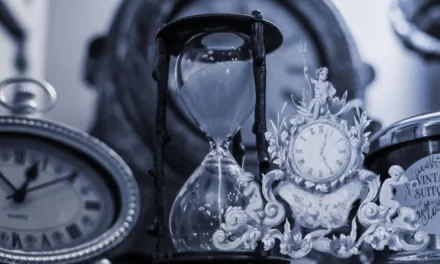
What can I do when I get stuck on a scene?

“I’m stuck on a scene. I know what needs to happen, but every time I try to write it, it stalls. What can I do to get unstuck?”
Every time I get one of these questions, I’m shocked at how relatable they all are! This is such a common thing that affects all writers. The moment your fingers hover over the keys and… nothing. It’s frustrating, and it can completely sap any creative momentum you had going!
The benefit of this being a common issue is that you can know for certain that you’re not alone. You’ve joined the ranks of hundreds of thousands of writers before you who have all had this shared experience. And the even better news is, we’ve all found our way through it!
So here are some tips for getting your groove back if you’re feeling stuck on a scene.
First: diagnose the block
Before you try to force yourself to write, figure out what’s actually wrong. Are you blocked because of something personal, or are you blocked because of something in the scene you’re trying to write? Different problems need different solutions.
Personal blocks
- Perfectionism paralysis: fixating on the “perfect” scene so hard you don’t write; fear of imperfection can get you stuck before you even start.
- Analysis paralysis: overthinking plot/motivations/research until you avoid drafting; second-guessing yourself is a surefire way to stop yourself from writing.
- Fear of starting: the blank page intimidates; infinite possibilities stall commitment and trigger procrastination.
If you’re stuck because of general writer’s block, we have some resources to help.
Scene blocks
- The stakes are mushy: if nothing truly matters, there won’t be any tension. Revisit your stakes. Readers must feel the cost.
- The goal is vague: if your character doesn’t have a reason for their actions, you’ll struggle to write. Make sure you know your characters’ goals and how the scene feeds into them.
- The scene starts too early: you might have too much filler, so you struggle to get to the meat of the scene. If that’s the case, just freewrite, but consider cutting out the fluff you started with so the scene starts at a more active moment.
- The conflict is external-only (or internal-only): pure action or pure reflection can stall your writing progress. Make sure your character has both internal and external conflicts that drive them.
- You don’t know your character well enough: if their motives feel foggy, the scene will too. Make sure you have a grounded sense of who all your characters are.
Quick exercises to get unstuck
When it comes to writing exercises, their job is to stop you getting stuck and to generate ideas. So if you’re struggling with a scene, and don’t know how to proceed, hare are some writing games and exercises you can do to jumpstart your creativity. They might not end up being the actual scene, but they should help get some ideas flowing.
1) Clarify the scene’s job
Write one sentence: “This scene exists to _____.” Fill it with a verb and outcome (e.g., “force Maya to lie to her sister to save her job”). If you can’t, the scene might not be worth writing to begin with. Clarity of purpose can stop you from getting stuck.
2) Set a micro-stakes timer
Try a quick writing game. Give your protagonist a 10-minute deadline inside the scene (even if it’s unlikely to make it into the finished manuscript), like a call they must answer, a train they must catch, a boss walking toward their desk. Time pressure creates urgency, and creating artificial stakes can get you writing again.
3) Switch the power dynamic
If your character currently has the upper hand in the scene, flip it. Make them need something from someone who won’t give it. If they’re the underdog in the scene, switch the dynamic to give them more power. Power shifts create conflict, and conflict creates ideas.
4) Dialogue-only draft
Strip the scene to lines of dialogue. No description, no tags. Let characters argue, bargain, reveal, or conceal. You’ll surface the conflict fast if all your characters are doing is talking to each other. Then layer back action and setting when you’re ready to dive back into writing.
5) Write the ending first
Decide how the scene changes the story. A revelation? A broken promise? A new secret? Write the conclusion first, then reverse-engineer the steps you need to get there.
6) Change one variable
Keep the same goal, but shift a single element, like the location, the time of day, the weather, who shows up, or what your character is wearing. Small changes can unlock new ideas.
Structure-level solutions
Beat it out (lightly)
Outline 5–7 story beats. Each beat should move toward the goal, stakes, or conflict. If a beat doesn’t move toward any of those, cut it out, or combine it with another. Then write beat-by-beat rather than the whole scene in one go.
Use “doorways”
Give the scene an entry and exit:
- Entry: What interrupts the status quo?
- Exit: What can’t go back to how it was?
These doorways bookend a scene. If you know how it starts, and how it must end, you just need to take the steps to get from one door to the other.
Escalate, don’t repeat
Sometimes, the biggest problem a scene will have that results in getting stuck is pacing. You need to raise the stakes.
A lot of getting stuck ends up because of repetition, especially if you know your character really well. If they make a choice, then it’s likely they’d make the same choice again. So, if your character attempts the same tactic twice, the second try must cost more or risk more.
If the scene still won’t move…
Cut to the decision
Skip the lead-up. Start on the line where your character chooses something (yes, no, leave, confess). Many scenes only become interesting at the moment of climax, so as long as you know how it will end, you can write that and move on, fleshing it out in revision if required.
Brackets and move on
Leave a placeholder: [X happens; Jamie ends up owing Rafi a favour]. Keep drafting. When it comes to revision, you’ll return to your placeholder with fresh context and better instincts.
Merge or delete
Two lukewarm scenes can become one strong scene if you combine the essential beats. Keep the essentials, but cut the fluff. If the story still works without the scene, consider cutting it entirely. Leaner is often stronger.
Getting stuck isn’t a flaw! It’s your brain giving you feedback. Scenes can stall when goals blur, the stakes don’t matter, or the conflict just isn’t interesting enough. Adjust those elements, and you’ll find it easier to get unstuck. You don’t have to write the perfect the moment in your first draft, you just have to give it momentum.































